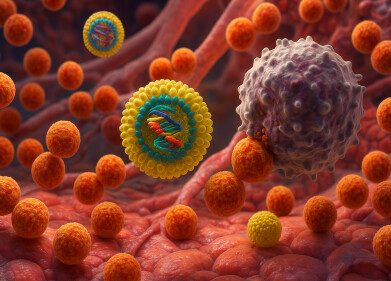-
.jpg) Researchers on the beamline at CLS (Credit: Canadian Light Source)
Researchers on the beamline at CLS (Credit: Canadian Light Source) -
.jpg)
News
Selective Catalysts point to more viable Chemical Production
May 09 2023
Researchers from the University of Toronto (UofT) have been looking into a more efficient use of catalysts that are used to help convert raw materials into acetic acid, a substance required for applications such as the production of paints, adhesives and coatings.
An estimated 18 million tonnes of acetic acid are currently produced around the world, but the raw materials commonly used are fossil fuel-based and could have negative environmental impacts.
The researchers have now demonstrated a new electrically powered catalyst that is twice as efficient as baseline materials at producing acetic acid. Their research has the added bonus of having a much smaller carbon footprint as the only inputs are CO2-derived CO, water and renewable electricity.
"In this project, I identified a strategy to design catalysts that might be extremely selective to a single chemical, meaning they produce more of the chemical you want, in this case acetic acid and much less of the by-product chemicals you don’t want,” says Joshua Wicks, a doctoral student in Professor Edward Sargent's research group at UofT.
"In our lab, we are very interested in the decarbonization of chemicals production and we're always searching for promising opportunities to apply electrochemistry in this hard-to-decarbonize sector of the economy."
While other catalysts are composed primarily of copper, the new catalyst is only one percent copper. The copper is surrounded by silver atoms, which provides several advantages – the catalyst is significantly more selective for acetic acid while still operating at scalable reaction ratesx and it is also very stable, a boon for industrial applications.
Wicks' colleagues Jun Li and Panos Papangelakis used the SXRMB beamline at the Canadian Light Source of the University of Saskatchewan to study the chemical environment of the catalyst in action. Observing the catalyst before, during and after use helped the team link their theoretical work to what they saw at the CLS.
"We're very lucky in Canada to have access to CLS facilities,” said Wicks. “These are complex experiments, and to study them in real-time with state-of-the-art measurements is not something to be taken for granted."
Once developed to an industrial scale, the new catalyst could make production of an important chemical much cleaner and cheaper.
The team’s results were published in Nature .
More information online
Digital Edition
Lab Asia Dec 2025
December 2025
Chromatography Articles- Cutting-edge sample preparation tools help laboratories to stay ahead of the curveMass Spectrometry & Spectroscopy Articles- Unlocking the complexity of metabolomics: Pushi...
View all digital editions
Events
Jan 21 2026 Tokyo, Japan
Jan 28 2026 Tokyo, Japan
Jan 29 2026 New Delhi, India
Feb 07 2026 Boston, MA, USA
Asia Pharma Expo/Asia Lab Expo
Feb 12 2026 Dhaka, Bangladesh


















